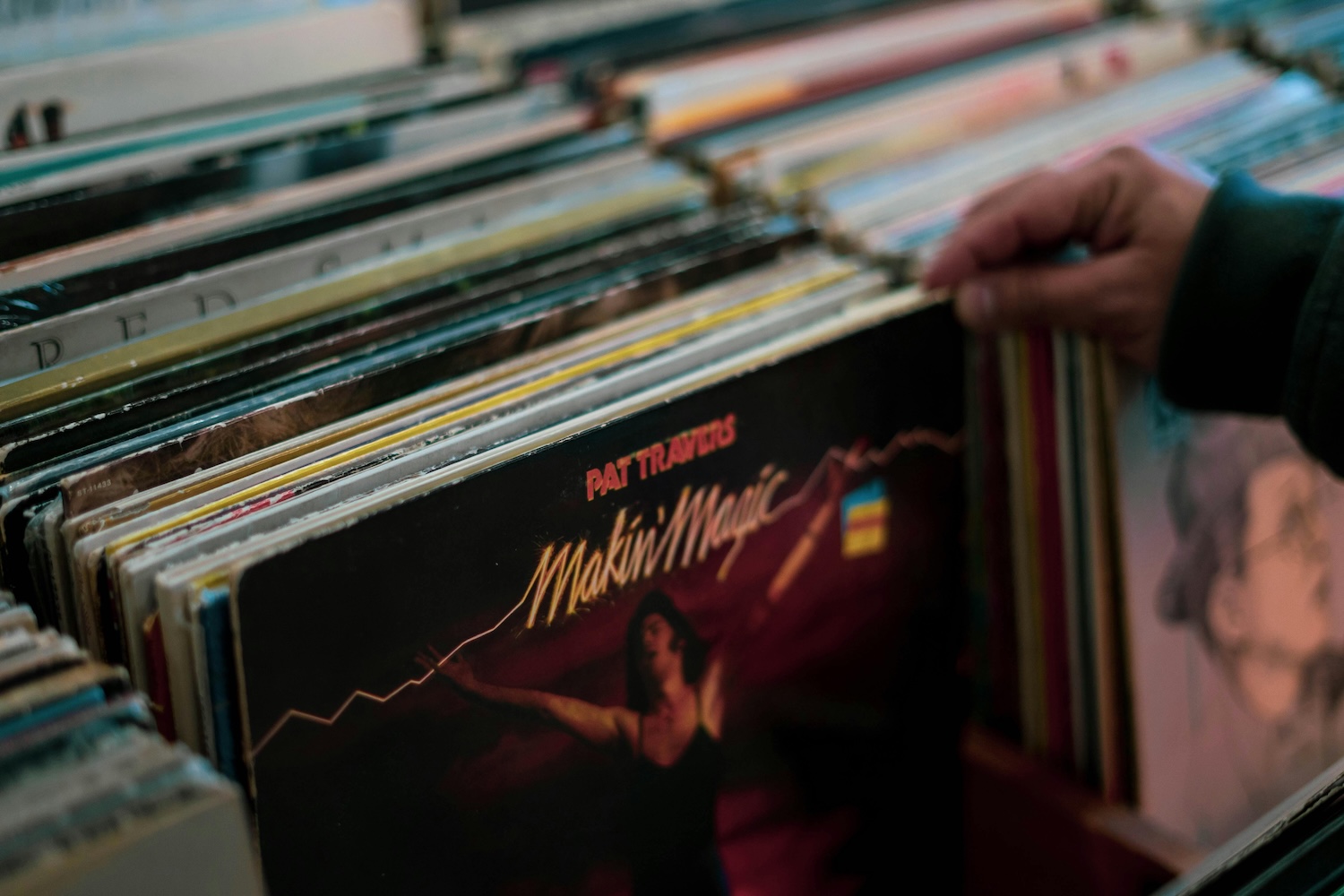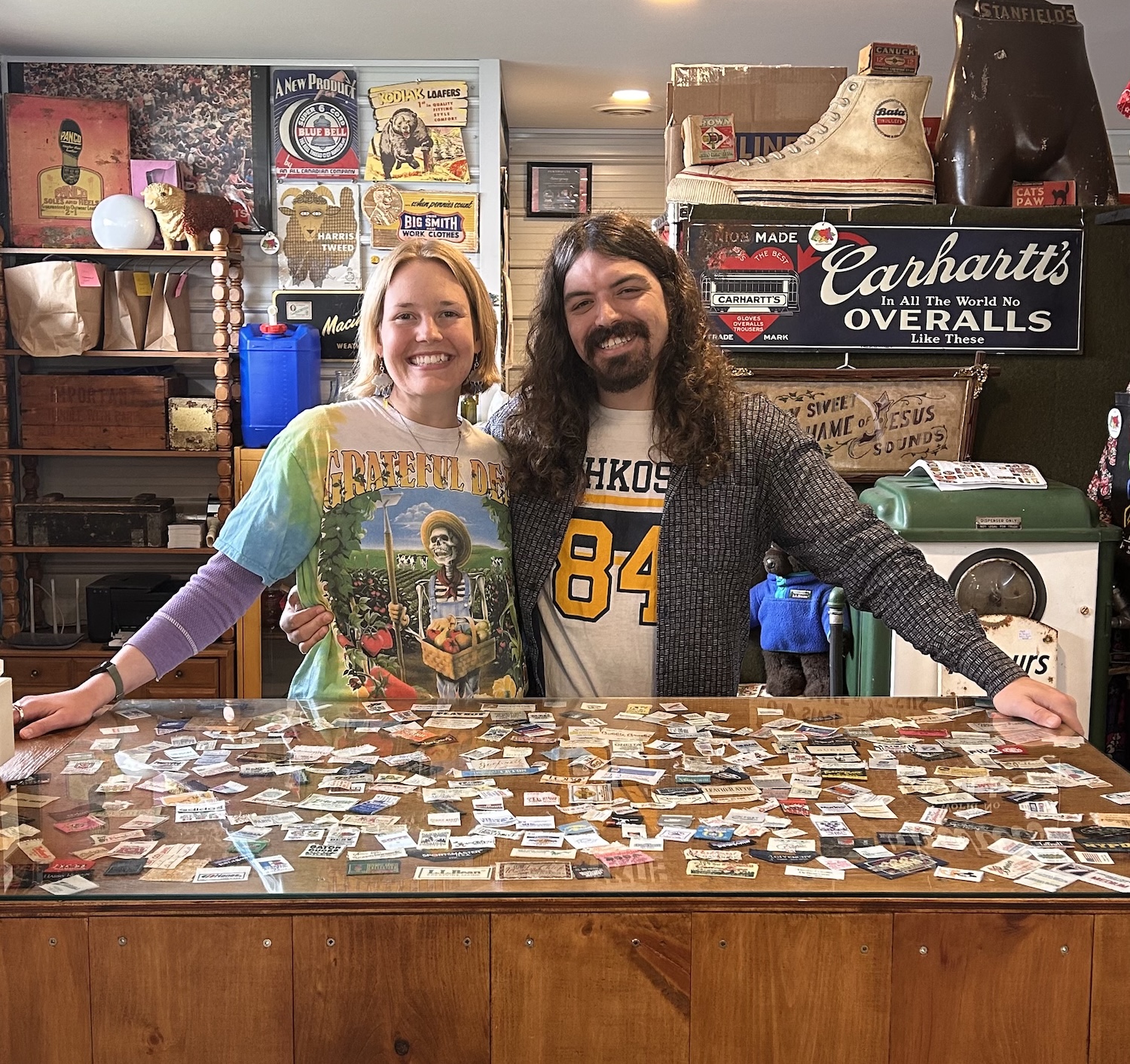Hungry for vintage fake food? Here’s what you need to know
Dig into vintage fake food: how much it costs, where it comes from and what to look for when sourcing. Bon appetit!
Craving some fun for your next shelfie? Dig into wacky and wonderful world of vintage fake food.
With square after square on social media feeds showing of-the-moment neutral and pastel home decor, vintage fake food just plain pops: bright burger condiments, cherry-topped cupcakes, vibrant fruits, cute pie keepers that look like … well, pies.
“I love fake food because it’s so joyful, and because it’s never what you expect it to be,” says Jodi Lai, owner of Moonshine Vintage and one of Instagram’s go-to sources for all things fake food.
“You think, ‘oh, that’s a strawberry.’ But wait! It’s actually a cookie jar. It always makes you think twice about what it is.”

Lai has been collecting and selling vintage fake food since she opened Moonshine Vintage in June 2020, but says her sales have increased over the past six months as the trend took off on social media.
Want to know how faux fare has captured the hearts and stomachs of vintage lovers? Take a bite of the below.
Why is vintage fake food having a moment?
In a world that often demands authenticity, the fascination with fake food could be viewed as somewhat peculiar, but human psychology says otherwise.
Burgers, ice cream cones, doughnuts, hot dogs: the vintage fake foods Lai has seen the most interest in recently are what many would consider “comfort” or junk foods.
The popularity of these comfort foods — even if made from ceramic — echoes recent research about the public’s propensity for snacking during times of crisis.
In May 2020, Statistics Canada reported that 35 per cent of Canadians had upped their junk food intake in response to stress about the pandemic. Another study, conducted by the University of Guelph in April and May 2020, showed that more than half of Canadian families had increased their consumption of snack foods.
Now, two years into the pandemic, a collective desire for the familiar still governs the consumer psyche.
“In normal times, customers often make purchasing decisions based on practical considerations such as a product’s healthiness, value, or price. But when consumers feel uncertain or afraid, these practical concerns can become overwhelmed by their emotional reactions,” say analysts Chelsea Galoni, Gregory S. Carpenter and Hayagreeva Rao, authors of a 2020 study on consumer buying preferences by Harvard Business Review.
“In the face of a contagious disease in particular, fear and disgust shift people’s natural desire for familiarity and predictability into overdrive — meaning that Big Macs become more popular again and Oreos fly off the shelf, even as sales of organic food surge.”
Faux food also feeds into feelings of nostalgia, kitsch and the familiar — recall the kitchen sets and toy ovens you may have played with as a child, or the painted flour canisters that may have rested on your grandmother’s countertops.
“Growing up, my mom always had a lot of fake food around the house,” remembers Lai. “I distinctly remember these little plastic strawberries she had that she used to put sugar or little packets in. Those always stuck with me.”
Now, Lai keeps a small shrine to fake food on her nightstand: a hamburger piggy bank, a doughnut piggy bank, an ice-cream-cone cookie jar.
Seeing an ordinary food item in an unexpected place such as a nightstand is part of the trend’s appeal, as is the desire to “nest” during times of crisis, says Lai.
The allure of fake food — both in the vintage world and the modern art world — “had a lot to do with COVID and people looking to add some fun and whimsy into their homes. These items are very practical as well. They have a purpose,” Lai says. “I put my vitamins into a cookie jar. It’s just a cuter way to store ugly things.”
What is the history of fake food?
Trick, or treat, or both? Fake food (or “forever food” as coined by Portland, Ore. vintage shop @things.pdx) is rooted in the trompe l’oeil (“deceive the eye”) art technique (see an example of trompe l’oeil below).
While the trompe l’oeil term wasn’t used until the early 19th century in France, the method was used to create an optical illusion of depth in paintings dating back to ancient Greece.
Sometime around the fourth century BCE, artists Zeuxis and Parrhasius competed to see who could create the more lifelike painting. Zeuxis was able to trick a bird into attempting to eat painted grapes, and Parrhasius tricked Zeuxis himself into trying to draw back a painted pair of curtains.
By the 1700s, trompe l’oeil ceramics started appearing on the tables of Chinese emperors and English aristocrats in the form of soup tureens, teapots, sugar bowls and moulded decorations.
The vessels were not only painted like the foods and animals they were based on, but shaped like them, too (see an example below). It was the Age of Enlightenment, and explorers were continually discovering new regions, plants and foods, which were then reflected in the art produced during the period.
Continued below
Vintage markets on this month
See events calendar
Continued from above
“While not all households could afford unseasonal and foreign fruit and vegetables, trompe l’oeil ceramics offered elite society the chance to boast a spread of exotic cuisine all year round, demonstrating their wealth and cultural awareness,” say curators at the Victoria & Albert Museum in London, England in an article on the history of trompe l’oeil ceramics.
The “deceive the eye” concept was of particular delight during the dessert course: “Under the guise of candlelight, the dinner party would expect to see sweetmeats, fruits and syllabubs, instead finding the extravagantly laid table filled with bundles of asparagus, partridges and fish,” say the curators.
“The trickery of trompe l’oeil, where the sweet contents would not always match the savoury exterior, was a huge selling point.”
Over time, the trompe l’oeil trend trickled down to the masses, gaining more popularity in the 1950s and 1960s as vacationers brought home glass or wax fruits as souvenirs from destinations such as Italy and Hawaii (for more background on this, check out “Fake Food is Trendy Again” from The New York Times).
In the 1970s, Australian pop artist Geoffrey Rose debuted his “Frozen Moments” sculpture series, suspending resin and sponge versions of common foods and beverages in mid-air motion (see below).
Where does vintage fake food come from and what materials are used to make it?
Fake food has been manufactured around the world, though some countries are known for certain products.
Antique English pieces were formed by adding liquid clay to a mould, resulting in a light, soft-paste porcelain that was then hand-painted with enamel. Manufacturers of these artifacts include porcelain factories in Worcester, Bow, Chelsea and Longton Hall.
Antique ceramic pieces were made in Staffordshire near Birmingham, according to the Victoria & Albert Museum.
More modern pieces are made from ceramic, plastic or epoxy resin, lucite, wax, papier-mâché or glass.
Lai says she regularly spots glass fruit made in Italy, ceramic pie keepers and “cabbageware” from Portugal, and cookie jars from Japan, as well as vintage fake foods from more modern vendors such as Pier 1 Imports that were manufactured in the United States or China.
What vintage fake food items are most popular?
“Everybody wants a big jumbo strawberry,” says Lai. “That is probably one of the most sought-after fake food pieces right now. Fast food is also having a really big moment. Anything in the shape of a burger or fries or hot dog will do really well. People really love bagels — anything carb related would sell really quickly.”
Cheeky fruits such as eggplants and peaches are also popular for their mild suggestiveness.
What should you look for when sourcing vintage fake food?
The trendiness of vintage fake food means it’s not as readily available in thrift stores as it once was, so be patient in your search — and look to resellers such as Moonshine Vintage, Rainbows & Retro, Tokosel Market and others who regularly bring in these tricky treats.
Lai sticks to three rules with her fake-food finds: their condition, their ability to make her feel happy, and a certain “cuteness” quotient that is hard to describe. “There have been items I’ve seen that I’ve passed up on, just because they didn’t hit that cuteness threshold,” she says.
When sourcing vintage glazed pottery, check it carefully before purchase for cracks, chips and crazing if you plan to use it to store food or drinks rather than decoration, as some traditional glazes may contain lead. (Read more on glazed ceramics and glassware regulations for Canada and the U.S.)
How much does vintage fake food cost?
If buying from a reseller, expect to pay anywhere from $10-$100, depending on the size and rarity of the faux food item. Extremely rare pieces, such as those “Frozen Moments” pop-art sculptures by Geoffrey Rose, can go for up to CAD $1,000.
What would be your holy grail vintage fake food find? Let us know in the comments!
Thank you for valuing our work!
Support our work to see this page.
You’ve got a good eye, but this gem is only available for members. Register for a plan or upgrade your current one to peek behind this vintage curtain, or log in below.
















